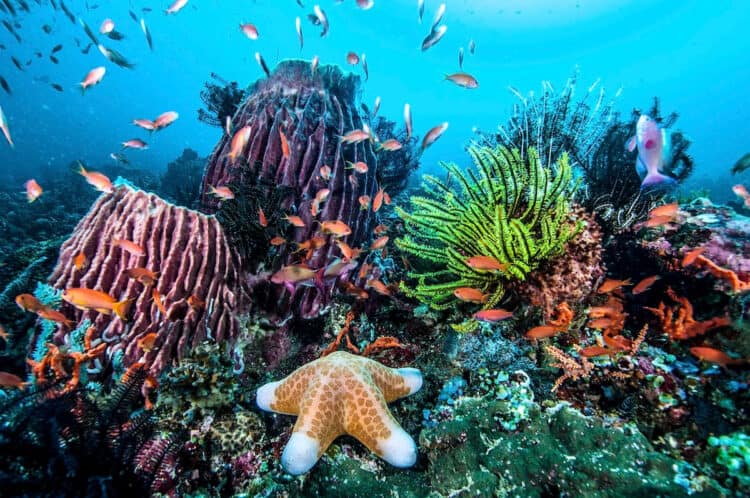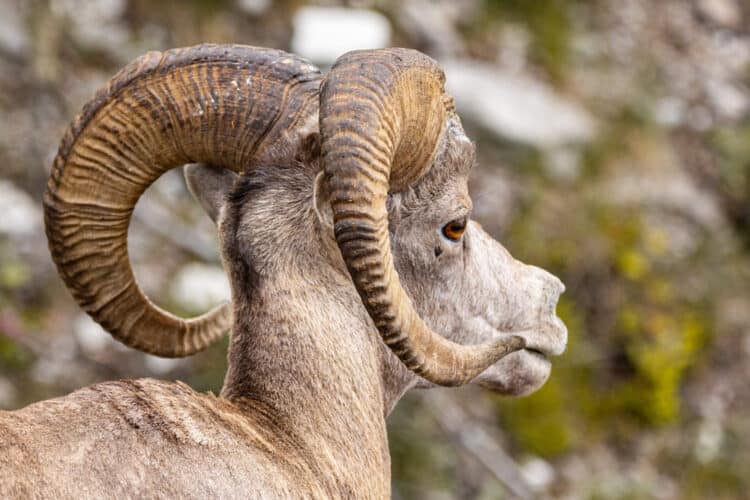The Northwest Passage is not an obvious choice for a holiday cruise. It is, after all, one of the most notorious ocean routes. Many hundreds of sailors died in opening up the seaway, which links the Atlantic and Pacific oceans via the Canadian Arctic, before it was conquered just over a century ago.
But the Arctic today is changing. Global warming is altering it at a rate that is unmatched anywhere else on Earth, and a journey once considered grotesquely dangerous has become a voyage now feasible for the inquiring traveller. Today you can sail through the Northwest Passage, as I did last week, on a ship that offers hot-tubs, bars and restaurants, albeit with armed protection against polar bears and kit for keeping out the cold.
By contrast, in 1845 John Franklin’s expedition to find the Northwest Passage was utterly defeated by the Arctic, even though his ships, the Erebus and Terror, were equipped with steam-powered engines, tinned food and other wonders of 19th-century technology. Trapped in the ice for several years, all 129 men on board died, many resorting to cannibalism as the end neared.
But 170 years on, ships have strengthened hulls, global positioning receivers, radar and powerful engines. Hence the ease with which our liner – the Akademik Sergey Vavilov research vessel, operated by One Ocean Expeditions – made its 12-day, 1,945-nautical-mile journey from Kangerlussuaq in Western Greenland, across Baffin Bay, on to desolate Beechey Island (where some of Franklin’s men are buried), down through the Bellot Strait and past King William Island – near where the wreck of the Erebus was discovered last year – and into the little port of Cambridge Bay.
Most of the voyage was made on seas generally free of ice and which were as calm as mill ponds, revealing some of the world’s most bleakly beautiful landscapes: mist-shrouded cliffs, ice floes that stretch to the horizon, and aboriginal settlements, some of them thousands of years old.Advertisement
However, there is another factor that made this journey possible, one that reveals the darker side of humanity’s scientific might and which provides the most intriguing aspect of any Arctic visit. Every year our factories and cars pump billions of tonnes of carbon dioxide and other greenhouse gases into the atmosphere and emissions continue to rise remorselessly. As a result, our planet is heating at a worrying rate, with the Arctic bearing the brunt of temperature rises.
Every year the melting of sea ice in the far north starts earlier and earlier and it is now vanishing at a rate of about 13% per decade. As a result, the Arctic’s sea ice cap has shrunk by nearly a third since 1979, according to the US National Snow and Ice Data Centre. Finding enough ice in which to get trapped is becoming the Arctic’s real problem.
That erosion of ice is likely only to worsen, scientists warn. Ice reflects radiation. But if it disappears, and reveals below it the Arctic’s dark waters, which are much better than ice at absorbing heat, less and less solar radiation will be reflected back into space and the Arctic will warm up even more. Indeed, many scientists now believe the Arctic could be free of sea ice in summer within a few decades.
It is difficult to assess what will be the consequences. Most experts believe they will be profoundly damaging. As Eric Solomon, director of Arctic programmes for the Vancouver Aquarium, puts it: “Sea ice is the foundation for life here.” In removing that foundation, humanity is carrying out a highly dangerous experiment – on a colossal scale.

Voyage through the Northwest Passage

Consider the simple issue of algae. It grows on the underside of sea ice and is eaten by krill, which is then eaten by Arctic cod, which in turn is eaten by seals. Take away the bottom rung of this food chain and all sorts of unintended consequences could be realised.

Then there are the narwhals. These tusked whales – sometimes called the unicorns of the sea – are prized by Inuits who use their blubber and skin to make a traditional, extraordinarily chewy meal called muktuk. (It’s an acquired taste, I discovered.) Narwhals can hide, safely, in sea ice and so avoid their natural predator, the killer whale. Robbed of that protection, narwhal numbers could dwindle dangerously, marine biologists warn.
Polar bears are also likely to suffer. These creatures are magnificent hunters. They can smell their favourite prey, ringed seals, from more than a kilometre, even though the seals may be hiding under snow. It is thought there are about 25,000 polar bears in the Arctic, made up of separate populations in 20 different regions. Unfortunately there have been few long-term studies of Ursus maritimus and half of these different populations are simply rated as being in an uncertain status.
However, in well-studied populations, such as those around the town of Churchill, on the Hudson Bay, research indicates that the body sizes of polar bears – and their birthrates – are declining as the climate warms. “This does not bode well,” says Canadian naturalist Franco Mariotti.
Polar Bears in the Arctic by Steven WrightThen there is the impact on humans. For Inuits, sea ice not only helps protect the local food chain, it acts as a highway on which they can ride their skiddoos and dog sleds to hunt and to visit friends. Disappearing ice means increasing fragmentation of local communities and limits the ability of people to hunt. This problem is only likely to get worse as the region is opened for mining and oil drilling.
This month Barack Obama gave final approval for Shell to drill into potential oil reserves beneath the sea floor of the Arctic Ocean. The move was denounced as “potentially catastrophic” by Greenpeace, while Michael Brune, executive director of the Sierra Club, a US environmental organisation, said the decision “goes against science, the will of the people and common sense”.
Concerns have been raised over Shell’s ability to clean up a spill, should one occur, in an area covered by sea ice for much of the year. If one considers the example of the Deepwater Horizon spill in the Gulf of Mexico, it took 87 days to cap, even though it happened in a fairly accessible region. In the Arctic, which is virtually impenetrable in winter, a similar gusher would be far more difficult to tackle. More to the point, the region’s ecology is about the most fragile on the planet and would be far more vulnerable to the impact of a major spill.
Take the landscape on the south shore of Devon Island. At 74° north, it is swept by ferocious, freezing gales which, in winter, send temperatures plunging to minus 50C. The island has a polar desert climate with hardly any precipitation.
Yet life clings to this bleak wilderness. My walk there a few days ago revealed an astonishing array of plants hugging the ground to survive: willows, which grow as trees in the UK but which, up here, shrink up to the size of twigs to keep out of the gales. In addition, the Arctic campion, or lantern flower, provides unique protection for its seeds, housed in a minuscule globe that acts like a greenhouse. These adaptations are vivid illustrations of life’s extraordinary resilience, though they would be quite incapable of withstanding any major environmental disaster.
Across Lancaster Sound, the lowering cliffs of Prince Leopold Island provide another demonstration of the vulnerability of the region’s wildlife. The steep cliffs of this Unesco world heritage site provide refuge for thousands of black-legged kittiwakes, fulmars, black guillemots and thick-billed murre, creating a vast, mist-shrouded citadel of screaming, winged wildlife. The island is one of the world’s most important refuges for migratory birds and again is highly vulnerable, as so many other areas of the Arctic, to ecological mishap.
It is not just the risk that oil drilling poses to the Arctic that causes consternation, however. It is the extraordinary notion that it is a good idea to take advantage of a problem that has been caused by our over-dependence on fossil fuels – by drilling for even more fossil fuel. Hence Friends of the Earth’s furious denunciation of the decision to let the Arctic’s pristine Chukchi Sea “become an energy sacrifice zone [that will only] worsen climate disruption”.
The real problem that faces the Arctic is its uncertain political status, a point that is clearly demonstrated by comparing the region with its southerly counterpart, the Antarctic. The latter is controlled by the Antarctic Treaty, which bans all mining, oil drilling or the presence of the military. It also strictly controls all environmental hazards. By contrast, the Arctic is owned by a ragbag of nations – Russia, Canada, the US, Norway, Sweden, Finland, Iceland and Denmark (through its dependency, Greenland) – which have very different ideas about how to run the place and which have shown no inclination to outlaw mining or oil drilling or impose cast-iron environmental controls.
Apart from the environmental risks that they pose, increasing mining and drilling operations will have many other consequences. Ships will end up crisscrossing the region for increasing numbers of days. The Inuits’ icy highways will be broken up even more while the region’s bowhead, blue and beluga whales face the prospect of their underwater communications being disrupted or blocked in these once quiet waters.
Then the last mission was in Norway, up in the Arctic at the end of the Gulf Stream, and boy is there a lot of rubbish up there!Rubbish is also a problem. In Antarctica, every piece of waste is removed from the continent. In the Arctic, no such rule is invoked, as is demonstrated by the container vessels of washing machines and other household goods that arrive in summer as the ice melts and ports like Kangerlussuaq and Sisimuit in Greenland and Port Inlet in Canada open up. These once-a-year imports, booked online months in advance, provide local householders with the means to modernise their homes. Crucially, the containers that brought them return empty. No attempt is made to ship away the old household goods that have been replaced. They are simply left to rust in the air.
In short, what arrives in the north, stays in the north: a small but significant demonstration of the casual indifference that is adopted when dealing with environmental issues in the region.
The Arctic remains a place of extraordinary beauty that is inhabited by some of the planet’s most remarkable animals. But time is running out. The region needs protection on the scale that has been meted out to the Antarctic, an idea recently backed by a House of Lords report on the Arctic.
As peers remarked, current approaches to protecting the Arctic are far too hesitant and cautious. In this, they are almost certainly correct. Whether we have time to bring meaningful improvements is a different matter.
Change is sweeping the far north. Time is not on its side.
Pressure points
Global warming is bringing major changes.
Mining:
The Arctic contains large quantities of iron ore, copper and nickel and new mines are being planned and constructed to exploit these, raising worries about pollution. Proposals to drill for oil have also triggered concerns about threats to the region’s delicate ecology.
Tourism:
Cruise expeditions into the Arctic are expected to expand significantly, bringing in more and more tourists while placing strain on the environment and the region’s few, small towns.
Politics:
Control of the region and its transport routes is hotly disputed by the eight Arctic nations. Canada, for example, claims the North west Passage as national sovereign waters. The US says it is an international waterway.
This article was first published by The Guardian on 30 Aug 2015.
We invite you to share your opinion whether there should be an international agreement to protect the arctic? Please vote and leave your comments at the bottom of this page:
Thank you for voting. In the event that you voted for an international agreement to protect the arctic, please sign the petition:
Will you take action to protect the Arctic?
Thank you for your support.






Leave a Reply